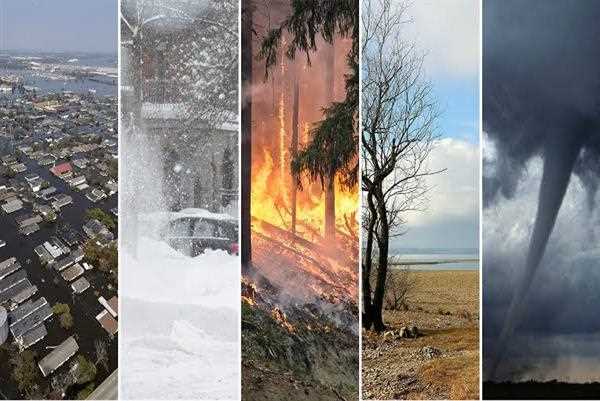Natural disasters and manmade disasters are two distinct categories of catastrophic events that differ in their origin and causes. Here's an explanation of the differences between the two:

Natural Disasters:
Natural disasters are events that occur due to natural processes and phenomena. They are typically beyond human control and arise from natural forces or occurrences. Some examples of natural disasters include earthquakes, hurricanes, floods, wildfires, tsunamis, volcanic eruptions, and droughts. Here are a few key characteristics of natural disasters:
1. Origin: Natural disasters stem from natural processes, such as geological or meteorological events, and are not directly caused by human activities.
2. Unpredictability: Natural disasters are often challenging to predict accurately. While scientific advancements have improved forecasting capabilities, the exact timing, intensity, and location of natural disasters can still be uncertain.
3. Lack of human intent: Natural disasters are not intentionally caused by human actions. They arise from the inherent dynamics and forces of nature, without any deliberate human intervention.
4. Widespread impact: Natural disasters can affect large geographic areas and impact a significant number of people and ecosystems. They can cause widespread destruction, displacement, loss of life, and economic damage.
Manmade Disasters:
Manmade disasters, also known as technological or anthropogenic disasters, are events that occur as a result of human actions, negligence, or errors. They involve human-made systems or technologies and can have severe consequences. Examples of manmade disasters include industrial accidents, nuclear meltdowns, oil spills, chemical leaks, terrorist attacks, wars, and infrastructure failures. Here are some key characteristics of manmade disasters:
1. Human involvement: Manmade disasters are directly caused by human actions, decisions, or errors. They result from failures in systems, technologies, or human interventions.
2. Potential for prevention: Unlike natural disasters, manmade disasters often have a degree of preventability. Improved safety measures, regulations, training, and risk management can mitigate the occurrence and impact of these disasters.
3. Varied causes: Manmade disasters can have diverse causes, including human error, mechanical failures, design flaws, inadequate maintenance, inadequate safety protocols, terrorism, conflict, or negligence.
4. Localized impact: While manmade disasters can still have significant consequences, they often have a more localized impact compared to natural disasters. Their effects are often confined to specific regions or communities, although there can be broader implications in certain cases.
5. Potential for learning and improvement: Manmade disasters often trigger investigations, inquiries, and regulatory changes aimed at preventing similar incidents in the future. Lessons learned from manmade disasters contribute to improving safety standards, regulations, and emergency response procedures.
Understanding the distinctions between natural disasters and manmade disasters is essential for effective preparedness, response, and mitigation efforts. While natural disasters are driven by natural forces beyond human control, manmade disasters highlight the importance of human responsibility, safety measures, and risk management to prevent and minimize the impact of catastrophic events caused by human actions.